In today’s market, where competition is fierce and consumers are inundated with choices, brands must strive for a unique approach to stand out.
Enter Allen Adamson, a luminary in the world of branding, a best-selling author, and the architect of the transformative concept ‘Seeing the How: Transforming What People Do, Not Buy to Gain a Market Advantage.’
Allen has a remarkable history of guiding top-tier brands to the pinnacle of their markets, through his unique focus on ‘experience disruption’ and the reengineering of routine activities.
Having collaborated with industry titans like Ogilvy and Landor, and revolutionized brands such as Unilever, P&G, FedEx, and Sony, he’s shaped new dimensions of consumer experience.
Today, we’re delving deep into a discussion with Allen on
The concept of ‘experience disruption,’
Spotting opportunities in mundane routines,
The integral role of technology in consumer experiences,
And strategies to focus on consumer experience to fuel growth and loyalty.
If you’re seeking progressive, actionable insights on leveraging ‘experience disruption’ for your brand or your clients, you’re in for a treat.
Understanding Experience Disruption
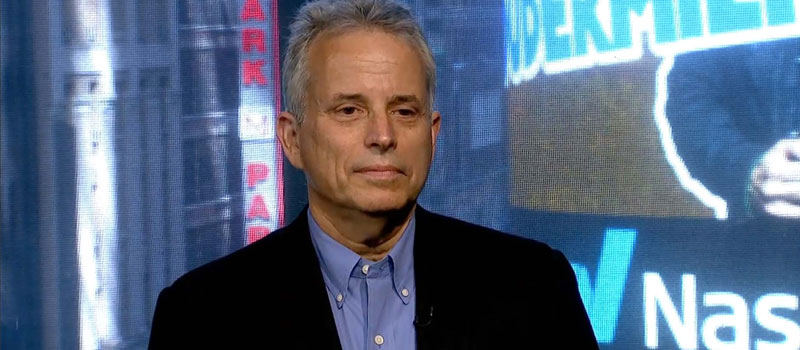
Stephen Houraghan
A certain term piqued my interest – a concept I’ve believed in for a long time, but never had the appropriate label for it: ‘Experience Disruption.’
This term also relates closely to ‘Experience Differentiation.’ Could you explain to us what exactly ‘experience disruption’ entails?
Why is it crucial in today’s business landscape?

Allen Adamson
‘Experience’ is a term that’s been used frequently in marketing, but my unique background allowed me to see it from a new angle.
Along with my extensive work with major brands, I also had the privilege of working with entrepreneurs at the NYU Stern School of Business.
There, I noticed a significant shift – fewer startups were focusing on making better products, and more were focused on changing how we do things.
They were questioning established routines and aiming to solve problems in novel ways.
Take, for instance, the transportation sector in New York City. A decade ago, getting a taxi involved physically hailing one from the curb. But with the advent of Uber, this whole experience was disrupted.
It wasn’t a dramatic technological leap, but rather a reimagining of existing behavior patterns – why not use personal cars to provide custom rides?
This is what experience disruption entails. It’s about challenging what we consider normal and enhancing it to be faster, easier, and better.
Such changes are proliferating across various sectors. The catalyst for such disruption isn’t just advertising or digital marketing but is also significantly fueled by word-of-mouth.

In today’s age, an ordinary experience does not stir a conversation. But anything extraordinary, either exceptionally good or bad, makes it to the discussion table.
Consider a flight journey – it’s the extraordinary experiences related to the journey, not the mundane details, that become talking points.
This gives us an insight – the brand is important, but the experiences that the brand facilitates are even more crucial.
People tend to share experiences on social media, especially if they are out of the ordinary.
So, if marketers aim to leverage the power of social media, they should focus on the experiences their product provides that might inspire people to talk.
Beyond Uber: Notable Examples of Experience Disruptive Brands
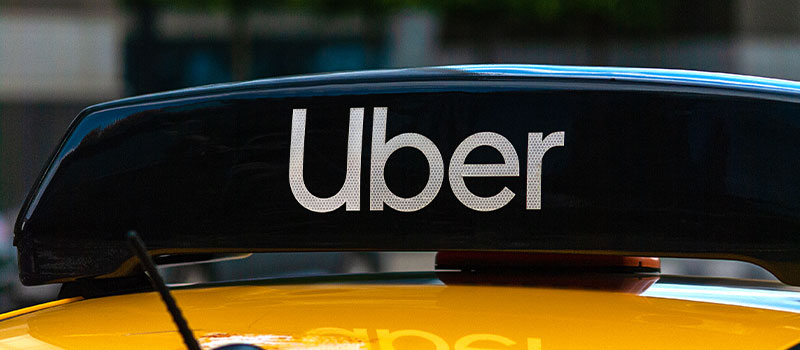
Stephen Houraghan
Considering the vast number of players in any given market, it’s apparent that product features and benefits can only be so differentiated.
Hence, if product differentiation becomes a strenuous task, the focus naturally shifts to the customer experience – an area where one can profoundly influence design and impact.
Using Uber as an example of such an ‘experience disruptive’ brand is enlightening.
But beyond Uber, which has remarkably transformed urban transportation dynamics, could you share a few other examples of your favorite experience disruptive brands?

Allen Adamson
The increasingly competitive marketplace has led to a deluge of similar products, often differing only minutely.
This has rendered it challenging to establish meaningful product differences that can sustain competitive advantage over time.
Hence, the focus is shifting more towards experience disruption.
Well-known disruptors like Airbnb have provided fresh ways for people to enjoy their vacations, breaking away from the traditional hotel room. However, disruption doesn’t always mean putting other businesses out of operation.
Instead, it’s about offering unique experiences that stand out in a sea of similarity.
A case in point is the product evaluation process. Traditionally, consumers referred to intricate reviews or expert publications like Consumer Reports for in-depth testing results.
While these sources provide extensive information, they often complicate the decision-making process.
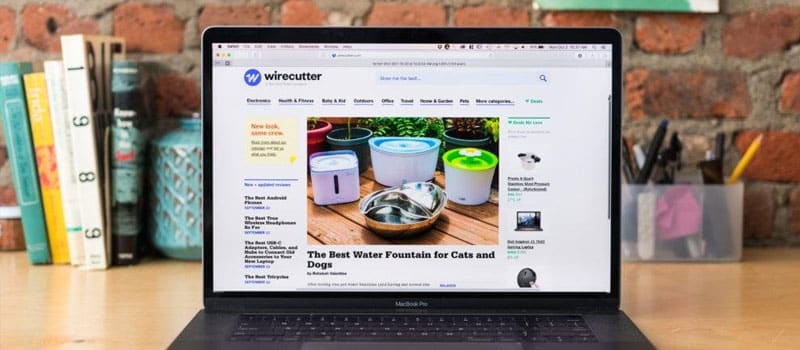
Comparing various washing machines, for example, leaves consumers more confused due to the small differences and overwhelming information.
Recently, Wirecutter, an electronic product evaluation company bought by The New York Times, has simplified this process.
They provide use-case-based recommendations, specifying the best product for a particular scenario instead of delving into a detailed analysis of every feature.
This shift has significantly disrupted the traditional way of shopping, making the process more straightforward, and allowing consumers to make quick, informed decisions based on their specific needs.
This change is a quintessential example of experience disruption, as it reimagines a common task, making it easier and more efficient.
PRO Brand Strategy BluePrint
Build Brands Like A Pro Brand Strategist

Decoding Experience Disruption: Simplifying Consumer Choices

Stephen Houraghan
In the increasingly complex marketplace, how can businesses simplify experiences to appeal to consumers’ basic needs?
Companies like Wirecutter have disrupted their sector by reverting to a simple, straightforward approach: they tell consumers directly which product best suits their specific needs.
As similarity among brands grows, and as consumer trust in salespeople dwindles, the ability to provide clear, tailored advice becomes invaluable.
This shift away from detailing features and benefits aligns with the concept of experience disruption or differentiation.
How can businesses identify opportunities for experiencing disruption in daily activities to gain market advantage?

Allen Adamson
Through extensive research, it becomes clear that the ability to spot opportunities within a given market is largely predicated on one’s willingness to adapt and stay curious.
Consider, for example, the beer industry. You might find that many individuals working within this sector have done so for upwards of 15 or even 20 years.
They are undoubtedly knowledgeable, but their knowledge is also heavily constricted by the particular confines of the beer industry.
There is a risk that they’ve shut down their curiosity and adopted a rigid approach:
they know how beer is bought and sold and aren’t necessarily open to new methodologies.
This can hinder the recognition of potential disruption. If you were to ask a Marriott executive who their competition is, they’d likely list off other hotel chains like Hilton.
They’re not considering the potential disruption from a person renting their apartment down the street. Often, disruptive ideas come from outside of a particular category, from those willing to question the status quo.
Therefore, the readiness to look at markets with fresh perspectives is key.

In order to spot opportunities, it is crucial to avoid becoming too fixated on the way things have traditionally been done.
Further, ensure your team is diverse, with individuals who bring different experiences and perspectives.
Employing young professionals who can bring fresh questions and insights is one strategy.
A successful approach to finding new opportunities often involves honing in on a particular category and solving a problem others have overlooked due to their broader focus.
For instance, 1-800-CONTACTS recognized the frequent need for disposable contacts and capitalized on the opportunity to deliver them directly to consumers.
Similarly, Politico was founded by two ex-Washington Post reporters who wanted to concentrate solely on politics, providing a focused, high-quality resource for their target audience – individuals heavily invested in the political scene.
In summary, by focusing intently on a particular area and executing it more effectively than competitors with a broader scope, significant opportunities often arise.
This phenomenon continues to generate new categories and possibilities in various industries.
Explore Brand Strategy
Programs & Tools
Challenges of Shifting Focus to Consumer Experience
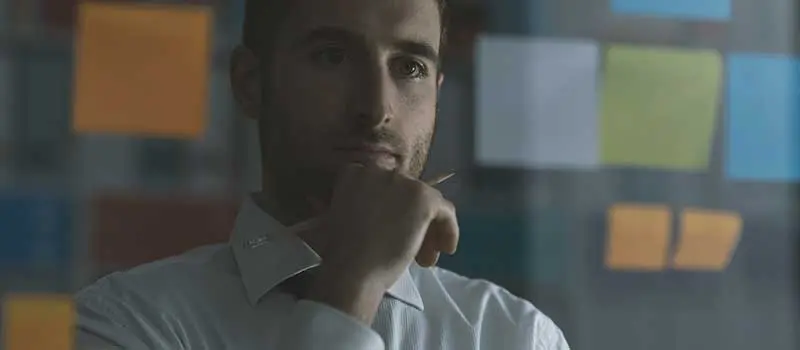
Stephen Houraghan
During a previous conversation with Ulli Applebaum, author of the brand positioning workbook, we discussed the significance of rituals, brand associations, and the importance of empathizing with customers by stepping into their shoes.
This approach uncovers various opportunities.
When combined with diverse perspectives from individuals who aren’t entrenched in a specific industry, fresh insights and opportunities often arise.
However, when businesses shift their focus from products to consumer experiences, what challenges do they commonly encounter in making this transition?

Allen Adamson
Being more curious and observant is crucial for marketers seeking to identify disruptive opportunities. Oftentimes, customers may not have a clear vision of what they want or need.
For example, if asked about the shortcomings of New York City taxis, people may have mentioned cleanliness or friendlier drivers, but they wouldn’t have suggested a complete overhaul of the transportation model.
As Henry Ford famously stated, if he had asked people what they wanted, they would have said faster horses.
This poses a challenge for marketers who are accustomed to directly asking customers what they desire.
Instead, they need to be more observational and provocative in their questioning.
For instance, during research for a pizza chain, customers expressed satisfaction with the pizza’s taste and their dining experience.
However, when asked what they would do if the company went out of business, they casually mentioned going to another nearby pizza place.
This indicated that while they liked the pizza, they weren’t particularly loyal or passionate about it.
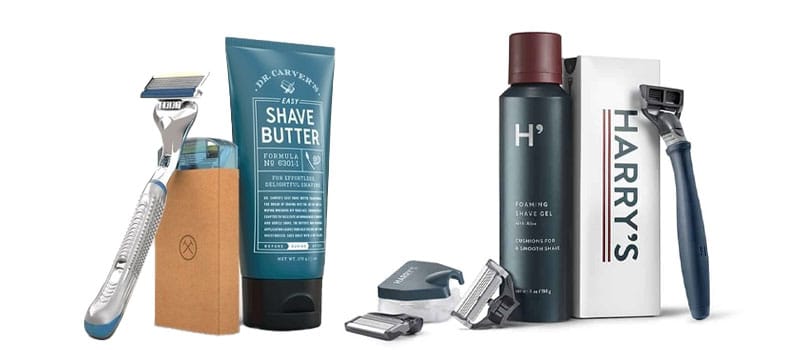
To truly understand customer preferences and potential disruptions, marketers must use stimuli and push consumers beyond surface-level responses.
It’s essential to bring ideas into research and be open to unexpected insights.
A classic example is the disruption of the razor market by companies like Dollar Shave Club and Harry’s.
They recognized that customers desired convenience and a seamless experience, prompting the delivery of razor blades directly to their homes.
Zooming out and uncovering disruptive opportunities is not an easy task.
Marketers must be astute observers, skeptical of assumptions, and willing to challenge the status quo.
By embracing a curious and observant mindset, marketers can uncover unmet needs and identify new directions for their brands.
Provocative Questions & Consumer Experience for Growth & Loyalty

Stephen Houraghan
How can we uncover innovative ideas and insights by asking provocative questions to both clients and consumers?
While provocative questions may carry the risk of potentially upsetting individuals, they have the power to elicit valuable responses beyond safe answers.
Striking the right balance allows us to discover unique perspectives and ideas.
Moreover, when we combine this approach with empathetically walking the consumer’s path and incorporating diverse perspectives,
We gain the ability to perceive consumer experiences in a way that other brands may have overlooked.
This realization prompts us to explore strategies that can foster growth and customer loyalty by placing a spotlight on the consumer experience.
Could you provide some strategies that effectively facilitate this growth and customer loyalty while emphasizing the significance of the experience?

Allen Adamson
In today’s fast-paced environment, staying close to customers and understanding their needs is more challenging than ever for marketers.
While many claim to be customer-centric, the traditional methods of research and occasional executive summaries no longer suffice.
The rapid pace of change requires marketers to break free from their screens and office meetings and truly immerse themselves in the consumer’s world.
To gain fresh insights and uncover game-changing opportunities, marketers must maintain curiosity and observe with a critical eye.
This approach involves venturing outside of their comfort zones and seeking different perspectives.
Provocative questions can spark new ideas and challenge existing conventions. By going back to the fundamentals and daring to think differently, marketers have the potential to make significant breakthroughs.
Reflecting on experiences in boardrooms and workshops, one can recall instances where a single provocative question or a return to the core principles ignited a major epiphany.

These moments of insight arise when someone dares to introduce a new perspective or challenge the established norms of the industry.
It is through such disruptions that truly innovative ideas can emerge.
For instance, a concierge-like approach to customer service can revolutionize the experience.
Rather than simply offering basic assistance, envision a concierge who anticipates customers’ needs and solves problems they may not even realize they have.
This level of personalized service goes beyond what is expected, enhancing the overall customer experience.
Similarly, addressing the practical challenges of online returns led to innovative solutions like Return Queen, a company that simplifies the process by handling returns on behalf of customers.
In conclusion, achieving customer-centricity and identifying untapped opportunities requires marketers to step outside their bubbles and immerse themselves in the customer’s world.
It demands a willingness to ask provocative questions, challenge industry norms, and seek unique perspectives.
By observing, questioning, and critically analyzing the customer experience, marketers can unlock hidden insights and transform their approach to drive success in a rapidly evolving marketplace.
AI and Experience Disruption: Insights & Outlook

Stephen Houraghan
Achieving simplicity can be a challenge, whether it’s in positioning or conducting research.
Uncovering that valuable insight may seem obvious in hindsight, but it often requires significant effort.
In the context of experiencing disruption, it’s crucial to acknowledge the impact of artificial intelligence (AI).
Based on your expertise and observations, what do you foresee in the months and years ahead regarding AI’s role in driving experience disruption?
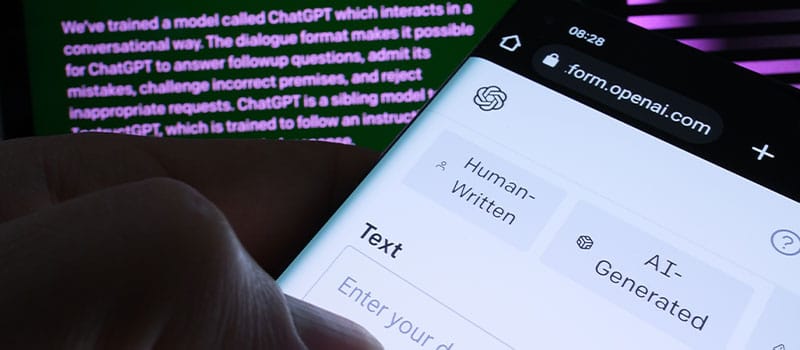
Allen Adamson
Different industries will face varying degrees of disruption in the future.
One industry that is likely to encounter significant challenges is education.
The traditional practice of asking students to summarize a book and write a report is no longer necessary when they can simply chat and request key themes from a novel like “Gone with the Wind” and their relevance.
Within 30 seconds, they can produce a response that might impress others as if they were a PhD expert on the subject.
This shift in education is just one example of the transformations underway.
Another area that could face disruption is the legal profession, particularly for paralegals who are responsible for researching cases.
Technological advancements may eliminate the need for extensive manual research, potentially affecting their career prospects.
The full extent of these changes remains uncertain, as technology tends to make mundane tasks faster and easier, yet it also has the potential to redefine the requirements for success.
Personally, I believe this evolution may lead to a greater emphasis on creativity and thinking outside the box.
Instead of simply tallying numbers and determining consumer preferences based on percentages,
Individuals will need to solve nonlinear problems and approach them with creative solutions.
The demand for creativity and innovative thinking is likely to grow as technology handles more routine tasks.
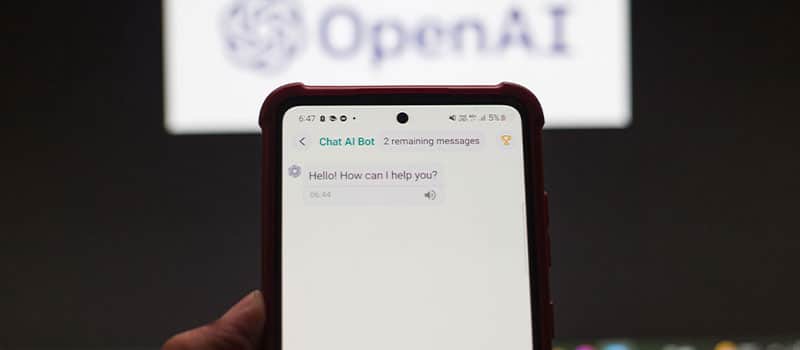
Despite these advancements, human experiences will still hold value.
Even as automated systems improve, there is a noticeable difference when dealing with a customer service representative who can perceive the stress on your face or hear the frustration in your voice.
While chatbots and automated services may efficiently assist with specific inquiries, they lack the ability to fully comprehend and empathize with human emotions.
This aspect of the human experience will remain important and may even become more pronounced as technology continues to advance.
In summary, the disruptive effects of technology will vary across industries.
Education is already experiencing shifts in how knowledge is acquired and demonstrated. Professions like law may face changes in the nature of their work.
As technology streamlines certain tasks, creativity and innovative thinking will become increasingly valuable.
Despite these advancements, the human experience and the ability to understand and empathize with emotions will continue to play a significant role.
While technology can assist us in many ways, it cannot replicate the interpersonal connections and experiences that make us human.
Startup Success: Customer Experience

Stephen Houraghan
If you were advising a startup brand entering a competitive market, particularly in today’s busy marketplace.
What would be your top tip for entrepreneurs on positioning their brand to deliver a memorable customer experience?
How can they step into the shoes of their audience, revamp the journey customers go through, and create a unique and engaging experience that goes beyond just showcasing features and benefits?

Allen Adamson
In the world of business, successful execution is ultimately what matters. Experience plays a crucial role in this aspect.
Large companies often excel at executing good experiences due to their size and resources.
However, smaller firms have the potential to deliver better experiences, provided they choose their areas of expertise wisely and execute them consistently over time.
Each company possesses its own unique strengths.
For instance, if a company wants to provide a fun experience, it must ensure that its employees embody a fun and enjoyable attitude.
Merely claiming to be the most fun without genuine enthusiasm from the staff may not be convincing. Instead, focusing on treating customers with respect and care can create a positive experience.
When it comes to making promises, such as delivering exceptional experiences, the true differentiating factor between marketers lies in their ability to execute.
Creating remarkable experiences is challenging because they rely on interpersonal interactions.
It goes beyond manufacturing a product like toothpaste; it involves teaching people how to treat others and having them deliver that experience consistently.
The difficulty of the hospitality and airline industries illustrates this point. In the airline business, even the best technology and systems can function flawlessly, but if human interactions fail to meet expectations, the entire experience can fall apart.
From an airline CEO’s perspective, a single unkind employee at the gate can undermine the entire customer experience.
For smaller companies, prioritizing the customer experience can be a winning strategy.

However, it is crucial to choose an experience that aligns with the company’s values and capabilities.
Attempting to completely transform a team’s approach can be challenging, as it is difficult to teach old dogs new tricks.
Even if short-term training yields some results, long-term success hinges on the team’s ability to consistently deliver the desired experience.
In conclusion, achieving success in business hinges on effective execution.
While large companies may excel at executing experiences due to their resources, smaller firms can outperform by focusing on areas where they naturally excel.
However, it is vital to choose experiences that align with the company’s DNA and avoid unrealistic expectations.
By prioritizing execution and selecting the right experiences, businesses can create long-lasting customer satisfaction.
Wanna Learn More About
Brand Strategy?
On-Demand Digital Program
Brand Master Secrets
Make the transition from hired-gun to highly valued brand strategist in less than 30 days. The systems, frameworks and tools inside this comprehensive program are all you need to level up.












